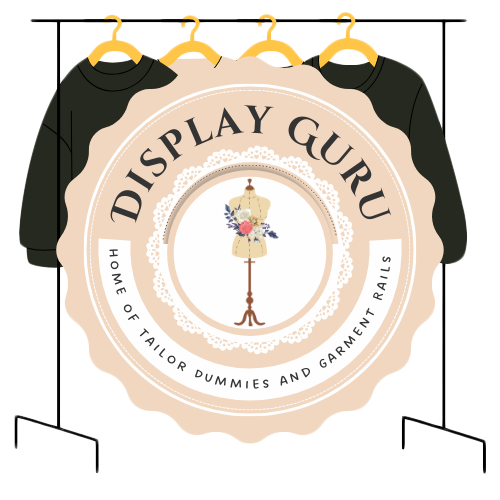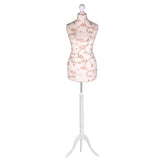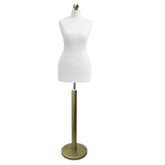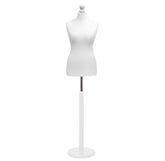10 Creative Retail Display Ideas to Boost Sales in 2025
In a competitive retail landscape, capturing customer attention is paramount. The difference between a casual glance and a committed purchase often lies in how products are presented. Gone are the days when static shelving and simple mannequins were enough; today’s consumers crave experiences that engage, inspire, and tell a compelling story. An effective visual merchandising strategy does more than just showcase stock, it creates a destination.
This article moves beyond generic advice to explore ten powerful and actionable retail display ideas designed to transform your physical space. We will provide a comprehensive guide to help you refresh your approach, whether you're an independent boutique owner, a fashion designer showcasing a new collection, or a visual merchandiser for a larger chain. From high-tech interactive installations to beautifully minimalist arrangements, these strategies offer practical insights for creating a memorable brand environment.
We will delve into specific concepts, showing you how to creatively use common fixtures like garment rails and dump bins to build displays that not only stop passers-by but also convert them into loyal customers. The goal is to move beyond simply organising products to curating an immersive journey. For more comprehensive strategies on reimagining your store's appeal, consider exploring additional resources on Top Retail Display Ideas to Transform Your Store. Get ready to rethink your shop floor and craft an unforgettable shopping experience that boosts engagement and drives sales. We will cover:
- Interactive Digital Displays
- Seasonal Pop-Up Displays
- Storytelling Window Displays
- Cross-Merchandising Displays
- Sensory Experience Displays
- Minimalist Clean Displays
- Vertical Garden Living Displays
- Augmented Reality Try-On Displays
- Local Community Feature Displays
- Gamified Shopping Displays
1. Interactive Digital Displays
In today's digitally-driven marketplace, static displays are no longer enough to capture and hold customer attention. Interactive digital displays represent a powerful evolution in visual merchandising, blending the physical and digital worlds to create immersive shopping experiences. These are not just screens playing a video loop; they are dynamic, responsive touchpoints that invite customer participation.
From touch-screen product catalogues to augmented reality mirrors, these displays empower customers to explore products, access detailed information, and even visualise items in a personalised context. Brands like Sephora have perfected this with their 'Virtual Artist' mirrors, which allow shoppers to try on makeup digitally. This approach transforms the passive act of browsing into an active, engaging journey, making it one of the most effective retail display ideas for modern consumers.
Why Use This Display Method?
Interactive displays excel at solving a key retail challenge: conveying vast amounts of product information without cluttering the sales floor. They serve as silent, tech-savvy salespeople, ready to provide specifications, demonstrate features, and showcase an entire product line that might not fit in the physical store. This is particularly valuable for retailers with complex or highly customisable products, such as electronics or automotive showrooms.
Key Insight: The primary benefit of interactive technology is its ability to collect valuable customer data. By tracking interactions, retailers can gain unprecedented insights into customer preferences, popular products, and pain points in the shopping journey, allowing for data-informed merchandising decisions.
Implementation and Best Practices
Successfully integrating interactive displays requires a focus on user experience and technical reliability.
- Keep it Intuitive: The interface must be simple and instantly understandable. If a customer needs instructions, the design is too complicated.
- Content is King: Regularly update the content to keep it fresh and relevant. Showcase new arrivals, promotions, or seasonal campaigns.
- Placement Matters: Position screens at a comfortable eye-level and ensure they are accessible, considering customers with disabilities.
- Plan for Downtime: Technology can fail. Have a clear protocol for troubleshooting and a backup plan, such as a default static image, to avoid a negative customer experience.
The following infographic summarises the core components of implementing interactive digital displays.
As the data highlights, the main benefit extends beyond initial engagement to include crucial data collection, a feature that provides a significant return on the investment. You can find further inspiration on how to integrate these screens by exploring more store display ideas.
The video below demonstrates how these displays can create a 'wow' factor and an unforgettable in-store atmosphere.
2. Seasonal Pop-Up Displays
Seasonal pop-up displays leverage the power of timeliness and thematic relevance, transforming sections of a store into temporary, event-driven experiences. These displays capitalise on holidays, seasons, or cultural moments to create a sense of urgency and excitement. More than just placing themed products together, they are curated environments designed to be eye-catching, immersive, and highly shareable.

Retailers like Target and Anthropologie excel at this, creating entire "worlds" for Halloween, Christmas, or the start of summer. These carefully orchestrated displays guide customers through a narrative, encouraging impulse buys and building an emotional connection to the occasion. By being temporary, they provide fresh and compelling retail display ideas that motivate repeat visits from customers eager to see what’s new.
Why Use This Display Method?
The primary advantage of seasonal displays is their ability to generate immediate relevance and create a powerful fear of missing out (FOMO). They tap into the existing festive or seasonal mood of the customer, making the products feel essential and timely. This method is exceptionally effective for driving sales of seasonal stock, preventing it from becoming outdated inventory after the event has passed.
Key Insight: Successful seasonal displays are not just about products; they are about creating an atmosphere. The goal is to build an "Instagrammable moment" where customers feel compelled to take photos and share their experience, generating organic marketing and social proof for your brand.
Implementation and Best Practices
Executing a successful seasonal pop-up requires careful planning and a flair for the dramatic.
- Plan Ahead: Begin conceptualising and sourcing materials 2-3 months in advance. This ensures you have everything needed without last-minute panic.
- Enhance the Mood: Use strategic lighting to create a specific atmosphere. Warm, twinkling lights work wonders for Christmas, while bright, vibrant colours are perfect for summer themes.
- Train Your Team: Ensure staff are fully knowledgeable about the seasonal products, their benefits, and any associated promotions to serve as enthusiastic brand ambassadors.
- Incorporate Interactivity: If possible, add a small interactive element. This could be a photo backdrop, a product demonstration station, or even a simple "guess the scent" game for seasonal candles.
3. Storytelling Window Displays
A shop window is more than just a space to display products; it is the first point of contact with a potential customer and a powerful stage for your brand. Storytelling window displays transform this space into an immersive scene, using a compelling narrative, theatrical props, and creative themes to capture the imagination of passersby. This technique moves beyond simple product arrangements to create an emotional connection, turning your storefront into a destination.
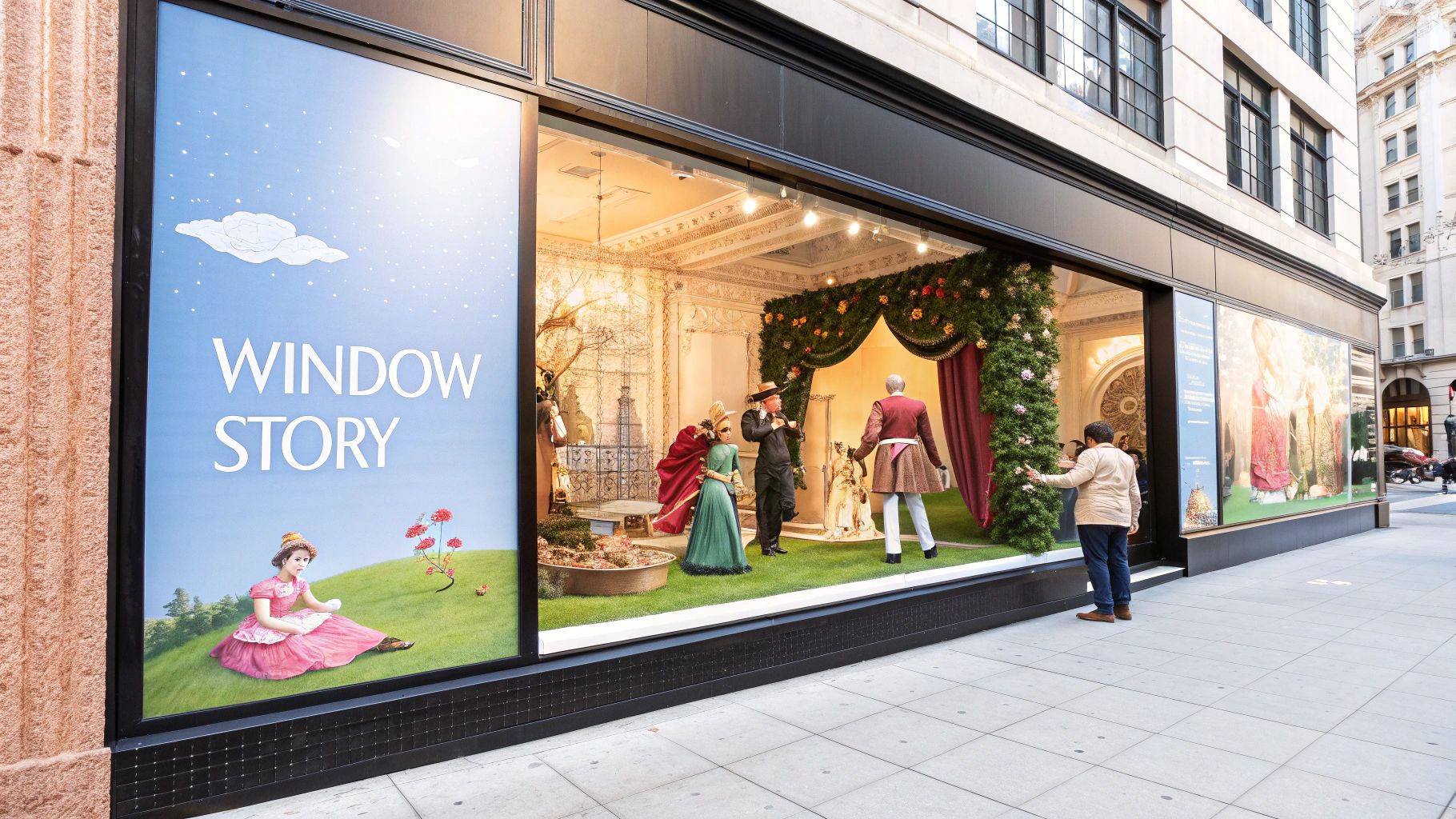
Luxury retailers like Bergdorf Goodman and Tiffany & Co. have mastered this art, creating legendary holiday and seasonal scenes that draw crowds. These elaborate presentations function as retail theatre, generating buzz and enticing shoppers to step inside to become part of the story. This makes narrative-driven windows one of the most memorable retail display ideas for building brand identity and driving footfall.
Why Use This Display Method?
Storytelling displays are exceptionally effective at cutting through the noise of a busy high street. They build an emotional bridge between the brand and the consumer, establishing a connection that transcends the transactional nature of retail. By creating a spectacle, you generate social media moments, encouraging people to photograph and share your windows, which amplifies your marketing reach organically.
Key Insight: A successful storytelling window doesn’t just showcase products; it sells an aspiration, a mood, or a dream. The product becomes a key character in the narrative, but the story itself is what truly captivates the audience and makes the brand unforgettable.
Implementation and Best Practices
Crafting a narrative-driven window requires a blend of creativity, strategy, and meticulous execution.
- Develop a Cohesive Theme: Ensure your story aligns with your brand identity, current collection, or a seasonal campaign. Every element, from props to colour palette, should support the central narrative.
- Use Professional Lighting: Strategic lighting is crucial for creating mood, highlighting key details, and drawing attention to featured products. Use spotlights and coloured gels to build atmosphere.
- Subtle Product Placement: Integrate products naturally within the scene. They should feel like an essential part of the story, not a forced addition.
- Keep it Fresh: Aim to update your narrative displays regularly, ideally on a monthly or seasonal basis, to give people a reason to keep coming back.
To truly master the art of captivating customers with your window displays, delve into powerful visual storytelling techniques that evoke emotion and connection. You can also explore more inspiration and practical tips for your next presentation with these window display ideas.
4. Cross-Merchandising Displays
Cross-merchandising is the art of displaying products from different categories together to create a cohesive story or offer a complete solution. This strategic placement goes beyond simple product shelving; it anticipates customer needs and guides them towards complementary purchases, effectively simplifying their shopping journey while boosting the average transaction value.
Think of IKEA's fully-furnished room settings or a supermarket displaying pasta, sauce, and parmesan cheese together. These displays help customers visualise how different products can be used in harmony. By grouping items that naturally belong together, you transform individual products into an irresistible lifestyle package, making it one of the most effective retail display ideas for encouraging impulse buys and enhancing customer convenience.
Why Use This Display Method?
The core strength of cross-merchandising lies in its ability to solve problems for the customer. Instead of shoppers having to hunt through various aisles for related items, the display presents a ready-made solution. This is particularly powerful for retailers catering to specific activities or events, such as REI grouping camping gear or Target creating "back-to-school" stations.
Key Insight: Cross-merchandising taps into the psychology of associative thinking. When customers see products presented as a cohesive set, they are more likely to perceive a higher value and convenience, which often leads to purchasing multiple items instead of just the one they originally came for.
Implementation and Best Practices
Successful cross-merchandising requires thoughtful planning and a deep understanding of customer behaviour.
- Focus on Natural Partnerships: Identify logical product pairings. A display of wine should be near the cheese and crackers, and a selection of premium coffee beans should sit beside coffee makers and mugs.
- Use Clear Signage: Guide the customer with signage that explains the theme or solution, such as "Create the Perfect Italian Dinner" or "Your Complete Camping Kit".
- Maintain Stock Levels: Ensure all items in the bundled display are well-stocked. A missing component breaks the solution you are offering and can lead to customer frustration.
- Train Your Staff: Equip your team to speak about the benefits of the bundled items, so they can reinforce the display's message and assist customers effectively.
Effective product grouping is a cornerstone of a successful retail environment. For a deeper dive into how these displays fit into a broader strategy, you can explore these detailed visual merchandising guidelines.
5. Sensory Experience Displays
In an increasingly competitive retail landscape, appealing solely to a customer's sense of sight is no longer sufficient. Sensory experience displays aim to create a multi-faceted environment that engages customers through touch, smell, sound, and sometimes even taste. This method moves beyond traditional visual merchandising to forge deeper, more memorable emotional connections with a brand.
From the inviting aroma of freshly baked goods in a supermarket to the curated soundscapes in a high-end audio store, these displays transform shopping from a transaction into an experience. Lush, for example, excels at this with its open-air product displays that invite customers to touch, smell, and test products directly. This tactile, fragrant approach makes their stores unmistakable and builds powerful brand recall, solidifying it as one of the most immersive retail display ideas.
Why Use This Display Method?
Sensory displays are exceptionally effective at creating a distinct brand atmosphere and encouraging longer dwell times. By stimulating multiple senses, retailers can evoke feelings of comfort, luxury, or excitement, which directly influences purchasing behaviour. This strategy is particularly powerful for brands whose products have strong sensory characteristics, such as perfumes, foods, high-fidelity audio equipment, or textiles.
Key Insight: A multi-sensory approach can significantly increase the perceived value of a product. A study by the Journal of Consumer Research found that pleasant ambient scents could improve customer evaluations of a store and its products, leading to increased spending and loyalty.
Implementation and Best Practices
Crafting an effective sensory experience requires careful balance and attention to detail.
- Subtlety is Key: Scents and sounds should be ambient, not overwhelming. The goal is to enhance the environment, not distract or irritate shoppers.
- Brand Alignment: Ensure every sensory element, from the playlist to the fragrance, aligns perfectly with your brand identity and target demographic.
- Consider Accessibility: Be mindful of potential allergies and sensitivities. Opt for hypoallergenic scents and ensure that audio levels are comfortable for everyone.
- Test and Refine: Before a full rollout, test your sensory elements with focus groups to gauge reactions and make necessary adjustments. To truly engage customers, consider focusing on creating captivating experiences, akin to professional experiential activations.
6. Minimalist Clean Displays
In a world saturated with visual noise, minimalism offers a powerful counter-narrative. A minimalist clean display is a deliberate strategy that leverages simplicity, whitespace, and a highly curated product selection to create a sense of calm and sophistication. This approach moves away from packing shelves and instead focuses on clean lines and uncluttered presentations, transforming the store into a serene, gallery-like space where each product is given room to breathe.
Brands that have mastered this aesthetic, such as Apple, COS, and Muji, demonstrate that less is often more. By eliminating visual clutter, they elevate the perceived value of their products and guide the customer's focus directly to the item's design and quality. This philosophy turns browsing into a focused, contemplative experience, making it one of the most effective retail display ideas for premium and design-led brands.
Why Use This Display Method?
Minimalist displays excel at communicating brand values like quality, craftsmanship, and modern elegance. This method is exceptionally effective for retailers who want to create an aspirational atmosphere and position their products as high-end. It allows the inherent quality and design of an item to be the hero, free from the distraction of loud signage or excessive props.
Key Insight: Minimalism is a psychological tool. The use of extensive whitespace and careful organisation signals to the customer that the products are special and have been chosen with care. This perceived exclusivity can directly translate into higher perceived value and a greater willingness to invest in the product.
Implementation and Best Practices
Achieving effective minimalism requires discipline and attention to detail. It is far more than just having less stock on the floor.
- Invest in Quality Fixtures: The display units themselves become a key part of the aesthetic. Opt for high-quality materials like natural wood, polished metal, or clear acrylic with simple, geometric forms.
- Perfect the Lighting: Lighting is critical. Use focused spotlights to highlight individual products and create subtle contrasts, guiding the customer’s eye without overwhelming the space.
- Curate Ruthlessly: Every item on display must earn its place. Select only the best examples of your product range, telling a cohesive story with a limited, carefully chosen collection.
- Maintain Impeccable Standards: Dust, fingerprints, and disorganisation can instantly ruin the effect. Staff must be trained to constantly maintain the pristine condition of the displays.
The video below showcases how luxury brands use minimalist principles to create a premium in-store environment.
7. Vertical Garden Living Displays
In an age of increasing environmental awareness, bringing the outdoors inside offers a powerful way to connect with customers on a deeper level. Vertical garden displays and living walls move beyond simple potted plants, transforming retail spaces into lush, natural sanctuaries that promote well-being and create a memorable brand identity. These displays use integrated living plants to build vibrant, green backdrops that purify the air and soften a store’s aesthetic.
Brands like Anthropologie and West Elm have masterfully integrated this concept, using living walls not just as decoration but as a core part of their brand story. These natural elements signal a commitment to sustainability and create a refreshing, calm atmosphere that encourages customers to linger. This approach is one of the most impactful retail display ideas for retailers aiming to build an eco-conscious, experience-led environment.
Why Use This Display Method?
Living displays are incredibly effective at creating a multi-sensory experience. The visual appeal, natural scents, and improved air quality combine to craft a uniquely positive shopping atmosphere that starkly contrasts with sterile, conventional retail settings. They are particularly suited for brands in the wellness, fashion, home goods, and organic food sectors, where a connection to nature aligns perfectly with the products being sold.
Key Insight: The primary benefit of a living display is its ability to reduce shopper stress and create a 'halo effect' for your brand. A calm, pleasant environment can positively influence perception of product quality and encourage slower, more mindful browsing, which can lead to increased sales.
Implementation and Best Practices
Successfully creating a living display requires careful planning to ensure the health of the plants and the safety of the environment.
- Choose Wisely: Select low-maintenance plants suited for indoor light conditions, such as snake plants, pothos, or ZZ plants.
- Plan for Water: Ensure proper irrigation and drainage systems are professionally installed to prevent water damage to your fixtures and flooring.
- Consider Maintenance: Factor in the ongoing cost of plant care, including pruning, feeding, and replacing plants as needed. Hiring a specialist plant service can be a worthwhile investment.
- Start Small: If a full living wall is too ambitious, start by integrating clusters of greenery, hanging planters, or moss art to test the concept.
8. Augmented Reality Try-On Displays
Augmented Reality (AR) is pushing the boundaries of visual merchandising by overlaying digital information onto the physical world. AR try-on displays merge the convenience of online shopping with the confidence of an in-store experience, allowing customers to virtually "try before they buy" without ever entering a changing room. This technology uses smart mirrors, screens, or a customer's own smartphone to project products like clothing, accessories, or makeup onto their image in real-time.
Pioneering brands have demonstrated its immense potential. Sephora’s 'Virtual Artist' lets shoppers experiment with hundreds of makeup shades instantly, while IKEA's 'Place' app allows them to visualise furniture in their own homes. This method removes significant purchase barriers, such as the hassle of trying on clothes or uncertainty about how an item will look. It creates a memorable, futuristic, and highly personalised interaction, making it one of the most innovative retail display ideas available today.
Why Use This Display Method?
AR displays are exceptional for retailers selling products where fit, colour, or style is paramount. They solve the "imagination gap" by giving customers an accurate preview, which significantly boosts purchase confidence and reduces return rates. This is especially effective for items that are difficult or unhygienic to try on, such as cosmetics, eyewear, or even footwear, as seen with Nike's AR shoe-fitting technology.
Key Insight: The true power of AR is its ability to offer an endless aisle. A customer can virtually try on every single size, colour, and style variant in your inventory, even items not physically present in the store. This maximises sales opportunities without requiring extensive on-site stock.
Implementation and Best Practices
Deploying AR technology effectively requires a seamless user experience that feels magical, not clunky.
- Ensure an Intuitive Interface: The technology should be effortless to use. Complicated steps or lagging software will frustrate customers. Prioritise a simple, responsive, and user-friendly design.
- Provide Staff Assistance: Have trained staff ready to guide customers through the experience, answer questions, and troubleshoot any issues. This personal touch can make the technology more approachable.
- Promote the Feature: Many customers may not know the technology is available. Use clear signage, in-store announcements, and staff encouragement to promote the AR display.
- Maintain Technical Excellence: Keep the software updated and ensure the hardware is well-maintained. A high-resolution camera and accurate tracking are crucial for a realistic and convincing experience.
9. Local Community Feature Displays
Building a loyal customer base often goes beyond transactions; it involves creating a genuine connection with the surrounding neighbourhood. Local community feature displays are a powerful merchandising strategy that transforms a retail space into a hub of local culture and commerce. By showcasing products from nearby artists, artisans, or producers, retailers can demonstrate a commitment to their community and offer unique, locally-sourced items.
This approach involves dedicating a specific area of the store to feature these partnerships. For example, a grocer like Whole Foods might dedicate an aisle end-cap to a local honey producer, or an independent bookshop could create a prominent display for authors from the region. This not only supports small businesses but also provides customers with a compelling reason to shop in-store, offering products they cannot find elsewhere. These displays are one of the most authentic retail display ideas for fostering goodwill and local pride.
Why Use This Display Method?
Local feature displays excel at humanising a brand and embedding it within the fabric of the community. In an age of global e-commerce, offering something hyper-local provides a unique selling proposition that large, faceless corporations cannot replicate. It tells customers that the retailer invests in the local economy, which can be a significant factor in their purchasing decisions.
This method is particularly effective for businesses that want to cultivate an image of authenticity and social responsibility. It appeals to consumers who prioritise supporting local enterprises and value the story behind a product.
Key Insight: The core strength of this strategy lies in its ability to build emotional loyalty. When customers see a store supporting their neighbours and local talent, they feel a stronger, more personal connection to the brand, which often translates into repeat business and positive word-of-mouth.
Implementation and Best Practices
Successfully executing a community feature display requires careful curation and relationship management.
- Establish Clear Partnerships: Create formal agreements with local artists or producers. Define terms for consignment, wholesale pricing, and display duration to ensure a professional relationship.
- Maintain Quality Standards: While the products are local, they must still meet your brand's quality standards. Curate the offerings to ensure they align with your store's overall aesthetic and customer expectations.
- Tell Their Story: Use signage, QR codes, or small placards to share the story of the local creator. Explain who they are and what makes their product special, as this narrative is a key part of the appeal.
- Rotate and Promote: Keep the display fresh by rotating featured artisans every month or quarter. Promote the partnership on social media and in newsletters to drive traffic and celebrate your local collaborators.
By integrating these features, you can create a dynamic and engaging shopping environment. You can explore more about how to structure these dedicated areas by reading about different retail display stands.
10. Gamified Shopping Displays
Beyond simple engagement, gamified displays transform the shopping experience into an interactive and memorable event. By incorporating elements of play, such as challenges, rewards, and competitions, retailers can tap into consumers' innate desire for entertainment and achievement. This strategy turns a passive browsing session into an active, enjoyable activity, fostering a powerful emotional connection with the brand.
From LEGO's in-store building challenges to Nike's virtual basketball games, gamification makes the product the centrepiece of a fun experience. Build-A-Bear, for instance, has built its entire business model on a gamified, step-by-step creation process. These displays are not just novelties; they are sophisticated retail display ideas that drive participation, increase dwell time, and create positive brand associations that last long after the customer leaves the store.
Why Use This Display Method?
Gamified displays are exceptionally effective at breaking through the noise of a crowded retail environment. They create a "destination" within the store, drawing customers in and encouraging them to interact directly with products in a low-pressure setting. This is particularly useful for brands targeting families, younger demographics, or anyone looking for more than just a transactional shopping trip.
Key Insight: The core strength of gamification lies in its ability to generate genuine brand loyalty. A rewarding or entertaining experience creates a positive memory, making customers far more likely to return and share their experience with others, effectively turning shoppers into brand advocates.
Implementation and Best Practices
Successful gamification requires a balance between fun, simplicity, and brand relevance.
- Keep Games Simple: The objective should be immediately obvious, and the game should take only a minute or two to complete. Complexity creates barriers to participation.
- Tie Games to Products: Ensure the activity is directly related to the item you are promoting. For example, a sports retailer could have a putting green to test a new putter.
- Offer Meaningful Rewards: The prize, whether a discount, a small freebie, or even just bragging rights on a digital leaderboard, must feel worth the effort.
- Track Engagement: Use technology to monitor how many people play, how long they engage, and whether it leads to a purchase, allowing you to refine your approach.
Top 10 Retail Display Ideas Comparison
| Display Type | Implementation Complexity 🔄 | Resource Requirements ⚡ | Expected Outcomes 📊 | Ideal Use Cases 💡 | Key Advantages ⭐ |
|---|---|---|---|---|---|
| Interactive Digital Displays | High (tech setup & maintenance) | High (hardware, software, power) | High engagement, data collection | Tech-savvy retail, personalized sales | Customer engagement, real-time updates |
| Seasonal Pop-Up Displays | Medium (frequent setup/changes) | Low to medium (props, signage) | Drives urgency, seasonal sales boost | Holiday/events, limited-time offers | Cost-effective, timely relevance |
| Storytelling Window Displays | High (creative and production) | High (props, lighting, design) | Emotional connection, social buzz | Flagship stores, brand building | High visual impact, emotional appeal |
| Cross-Merchandising Displays | Medium (planning & coordination) | Medium (inventory & signage) | Increased average transaction value | Solution selling, complementary goods | Convenience, sales increase |
| Sensory Experience Displays | High (multi-sensory elements) | High (maintenance & materials) | Longer dwell time, emotional impact | Premium brands, experiential retail | Memorable, multi-sensory engagement |
| Minimalist Clean Displays | Low to medium (curation focused) | Low to medium (fixtures, lighting) | Premium brand perception, product focus | Luxury & quality-driven retail | Timeless, reduces decision fatigue |
| Vertical Garden Displays | High (plant care & upkeep) | Medium to high (plants, irrigation) | Eco-friendly appeal, wellness | Eco-conscious, lifestyle brands | Unique aesthetic, air quality benefits |
| Augmented Reality Try-On | High (tech development & support) | High (hardware & software) | Reduced returns, enhanced confidence | Fashion, furniture, tech-forward retail | Contactless, shareable experience |
| Local Community Displays | Medium (vendor coordination) | Low to medium (local sourcing) | Community loyalty, authentic branding | Local stores, artisan products | Strong local connections, unique inventory |
| Gamified Shopping Displays | High (game design & tech support) | Medium to high (interactive tech) | High engagement, extended dwell time | Interactive retail, youth markets | Memorable, data collection opportunities |
Turning Display Ideas into a Profitable Reality
We have journeyed through a diverse landscape of innovative retail display ideas, from the high-tech allure of augmented reality to the grounded, authentic charm of community-focused showcases. The central theme connecting these concepts is clear: modern visual merchandising is no longer just about arranging products. It is about crafting immersive experiences, telling compelling stories, and building genuine connections with your customers.
The power of these strategies lies in their ability to transform a passive browsing session into an active, engaging journey. Whether you captivate passers-by with a narrative-driven window display, immerse shoppers in a multi-sensory environment, or offer the personalised convenience of an AR try-on, you are moving beyond transactional sales. You are creating memorable moments that foster brand loyalty and encourage repeat visits. This strategic approach is what separates fleeting trends from sustainable business growth.
Synthesising Strategy with Brand Identity
The most impactful takeaway is that there is no single "best" display strategy. The optimal approach for your business is one that authentically reflects your brand's unique identity and resonates deeply with your target audience. A luxury boutique might find immense success with minimalist, gallery-style displays that emphasise craftsmanship, while a vibrant, youth-focused brand could see remarkable engagement from gamified or interactive digital installations.
Consider the following points as you synthesise the ideas from this article into your own strategy:
- Brand Alignment: Does the display concept reinforce what your brand stands for? A display featuring a vertical garden, for example, powerfully communicates a commitment to sustainability and natural aesthetics.
- Customer Resonance: Will your target demographic appreciate the approach? A tech-savvy, younger audience may be drawn to AR and digital screens, whereas a community-centric shopper will value a display highlighting local artists.
- Practical Feasibility: What are your limitations regarding budget, space, and technical resources? A seasonal pop-up or a well-executed cross-merchandising display can deliver significant impact without the overhead of complex technology.
The goal is not to implement every idea but to thoughtfully select and combine elements that create a cohesive and compelling in-store atmosphere. You might blend a long-term minimalist aesthetic with quarterly seasonal pop-ups to keep your space feeling fresh and dynamic.
Your Actionable Next Steps to Implementation
Translating inspiration into reality requires a structured plan. Moving from concept to a customer-facing display involves several key stages. To ensure your efforts lead to tangible results, we recommend focusing on these actionable steps:
- Conduct a Display Audit: Critically evaluate your current displays. What is working well? Where are the opportunities for improvement? Use your smartphone to take photos of your store from a customer's perspective to gain a fresh point of view.
- Define Your Objectives: What do you want your new display to achieve? Is the primary goal to increase footfall, boost sales of a specific product line, enhance brand perception, or improve the customer flow through your store?
- Select and Plan Your Concept: Choose one or two retail display ideas from this guide that align with your objectives and brand. Sketch out the design, list the necessary products, and determine which props and fixtures you will need, from mannequins and garment rails to lighting and signage.
- Source High-Quality Fixtures: Your creative vision needs a reliable foundation. Investing in professional, durable equipment is crucial. Versatile fixtures can be adapted for various campaigns, from storytelling window displays using tailor's dummies to promotional events requiring sturdy dump bins.
- Measure and Refine: Once your new display is live, track its performance. Monitor sales data for the featured products, observe customer interaction, and gather feedback from your staff. Use these insights to make small adjustments and refine your approach for future merchandising efforts.
By embracing this strategic process, you elevate your displays from simple product showcases to powerful business tools. A well-executed display is a silent salesperson, working around the clock to attract, engage, and convert. It is an investment that pays dividends in customer loyalty, brand recognition, and ultimately, a healthier bottom line.
Ready to bring your creative retail display ideas to life? A brilliant concept deserves professional-grade equipment. Display Guru offers a comprehensive range of high-quality fixtures, from versatile garment rails and elegant tailor's dummies to practical dump bins, providing the essential foundation for any display you can imagine. Explore our collection at Display Guru and find the perfect hardware to build displays that captivate and convert.
